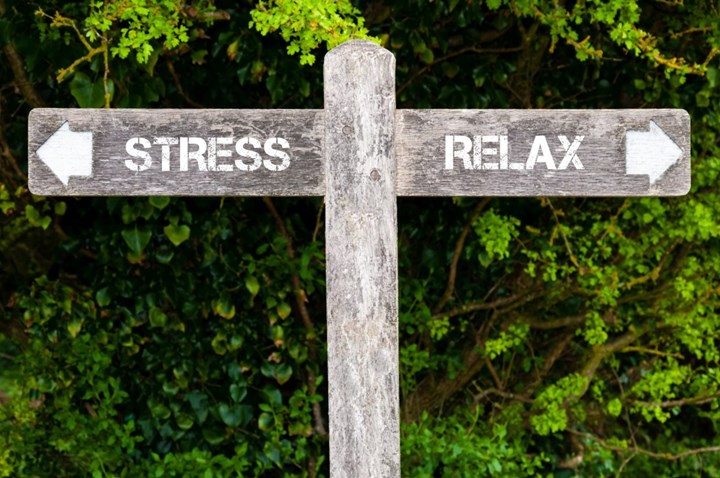By Rob Verkerk PhD, founder, executive and scientific director, ANH-Intl
We’ve been scheduled to run a couple of pieces this week on stress for some time now. Melissa in our team had diligently informed us some time back this week was to be International Stress Awareness Week.
I jumped in and volunteered to do a piece on Heart rate variability (HRV). I passionately believe it is one of the most valuable and accessible single proxies that measures how we’re coping – or perhaps not coping – with stress.
Take note of your numbers (key HRV parameters) first thing in the day, and you can handle your day in ways that help you better manage stress. In the long-term, that means you’ll likely live longer, be happier, achieve more and have a better quality of life. Not bad for a very low investment on your part – some kind of ANT+ or Bluetooth heart rate measuring device (effectively a wearable ECG) that costs you less than £40 (€46; $53) and lasts for years!
More and more people are aware of the adverse effects of stress on their lives. Fewer recognise that in the case of psycho-social stress, the debilitating form that affects more and more of us in this modern, digitised, impersonal, incessant world in which so many of us live, it’s not the stressor itself that’s the main problem. It’s how we react or respond to the stress that causes the knock-on effects on our mental and physical wellbeing.
There’s a growing medical and scientific literature on the subject of HRV as a robust measure of our response to different kinds of stress. But HRV can also tell you a lot more, including your state of recovery from intense physical activity through to predicting your risk, or otherwise, of an early death.
Many people recognise that they are under stress, but, understandably, find it difficult to gauge how they’re coping with it at any point in time. Enter HRV, an objective indicator of the balance of your autonomic nervous system (ANS), the system that subconsciously controls so many processes in your body, adapting your response in ways that are intended to increase your chances of survival.
Right up there in the survival stakes is your stress response.
Why HRV?
Heart rate variability is about measuring changes in the intervals between successive heart beats. For a few decades, we’ve known that more variability in these inter-beat intervals is a good thing. More variability generally reflects fitness, lower biological age, more resilience (to stress) and longer life span.
It might seem odd that variability is a good thing. But the heart is no metronome. The variability is part of the natural tension that exists in so many areas of biology that gives rise both to balance and responsiveness. Our stress response allows us to adapt and respond to ever changing and often risky environments.
When we inhale, our heart beats a little quicker courtesy of the sympathetic (the ‘flight and fight’) branch of our ANS. By contrast, when we exhale, the parasympathetic branch of our ANS (the ‘rest and digest’ branch), notably the vagus nerve, takes over and slows our heart rate.
These changes in inter-beat interval over time help generate a series of numbers via an app or computer that gives you what are referred to as ‘time-domain’ measurements. There’s a second group of measurements that are based on the frequencies (amplitude) from your electrocardiogram (ECG) signal. These power measurements give you more information about the relative balance between the parasympathetic and sympathetic systems.
Your ideal rested and recovered state, if there is such a thing, is one in which you have perfect balance between the two branches of the ANS. You’re not so chilled that you can’t respond to the arrival of a sabre-tooth tiger or learning that your child has accidentally jumped into a boiling hot bath. But also you’re not on tenterhooks, ready to fly off the handle on receiving any additional stress burden.
Adrenaline is the most well-known sympathetic hormone. It’s the driver of our fight and flight response. Without it we’d have died many times over as a species. Even if we’ve over-used adrenaline in some athletic pursuit, rather than for survival, we still need to recover and regain balance. We need time to recover our vagal tone, and that might require us leaning for a day or so on our parasympathetic system and the release of acetylcholine from the vagus nerve. This is the crucial and largest visceral sensory nerve in the body. More than any other nerve, it’s responsible for the sensory connection between every organ in the body and the brain. It’s the key link, for example, in the now well-recognised, gut-brain connection.

What numbers?
Of the different statistics you get from time-domain measurements, there are a few that are increasingly viewed as very robust measures. In all cases this means measuring your HRV for 4 minutes or more. We find 5 minutes to be both practical at first waking (to establish your ‘morning readiness’) and there’s a good amount of literature supporting use of this short-term time frame. A word of warning, however: never compare data from long-term measurement (e.g. 24 hours or more) with short-term measurements of say 4 to 10 minutes. The science shows us these data are absolutely not comparable!
Because this article serves as something of an HRV 101, we’re just going to mention here 4 bits of data you can get from most HRV apps that are now available on smartphones. Elite HRV is the one we use most, but there are others too, such as HRV4Training.
Key time-domain parameters:
- rMSSD (root mean square of successive differences)
- ln(rMSSD) (logarithm of the root mean square of successive differences)
The greater either of these numbers, the greater your HRV. Apps like Elite HRV convert your ln(rMSSD) result into an ‘HRV score’ that is actually an arbitrary 0-100 scale to make it easier to interpret.
Key frequency-domain parameters:
- Low Frequency (LF) Power
- High Frequency (HF) Power
In simple terms, higher LF power is about sympathetic dominance, and more HF power is about increased activity of the parasympathetic branch.
Our HRV helps explain why all the great health traditions have emphasised the breath. In Yoga, the breath is all important - and the focus is often on the out-breath that activates the parasympathetic branch of the ANS.
We even tell our loved ones to “take a few deep breaths” when we want to help them cope with a stressful event.
If you start measuring your HRV on a daily basis, you’ll soon find the things that really help bring you back into balance. Meditation, yoga, a wide range of breathing techniques, forest bathing, a walk in the park, engaging with things that have purpose or meaning to us, and time with our loved ones or around animals, are just a few that work so well for many of us.
Getting practical
It’s not difficult to get started. Some simple steps:
- Choose your HRV app, such as Elite HRV or HRV4Training.
- Then get your yourself a compatible HRV measuring device. The app you select will tell you which ones work and these are readily available, mostly as chest belt heart rate monitors, from online sellers.
- Set the app to measure your HRV for 5 minutes
- Take your measurement shortly after waking (give it a couple of minutes if you use an alarm clock!) and before you get stuck into your day proper. Decide how you’re going to locate yourself physically, be it lying in bed, or sitting up, and always take it in the same way to make the results between days comparable
- Learn how your HRV changes over time and according to different types of stress
- Make sure you allow yourself enough recovery time and relaxation if you’ve experienced significant sympathetic activation, even if this is related to positive stress (e.g. physical training).
Given it’s International Stress Awareness Week, find out about 10 stress busting tips from the International Stress International Stress Management Association (ISMA) that’s responsible for creating this week of stress awareness.








Comments
your voice counts
08 November 2018 at 9:13 am
Excellent 101 - thank you! Answered a lot of questions I’ve had for a while but haven’t had the time to research yet.
08 November 2018 at 9:35 am
Thank you Jacqueline. Please feel free to share with anyone else who may be interested.
Warm Regards
Melissa
08 November 2018 at 12:14 pm
Great article illustrating the importance of getting to know your breath and breathing patterns. As a Yoga teacher and Physical Therapist for over 25 years, it is the single most important aspect of my work, with people from teenagers at school through to pain sufferers of all ages. It's worth noting, that just simply taking 5 minutes to be conscious of your breath as it moves in and out of your nose, with a small pause between the inhale/exhale and again between the exhale/inhale, while listening to your heart-beat, will be significant in reducing the effects of stress and tension in your body. Practiced daily, this simple exercise will help you becomes friends with both your breath and your heart.
10 November 2018 at 6:48 pm
Hi Kate
Thank you for sharing such a simple and useful technique.
Warm Regards
Melissa
Your voice counts
We welcome your comments and are very interested in your point of view, but we ask that you keep them relevant to the article, that they be civil and without commercial links. All comments are moderated prior to being published. We reserve the right to edit or not publish comments that we consider abusive or offensive.
There is extra content here from a third party provider. You will be unable to see this content unless you agree to allow Content Cookies. Cookie Preferences